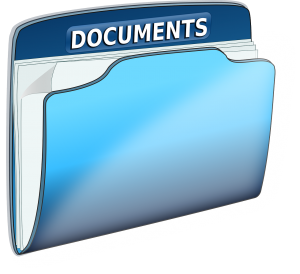Nowadays, most of us use the Internet not only to retrieve information, but also to create and share our own information. Information sharing has become an integral part of our daily life. For enterprises, the Internet has changed how they conduct business. Collaboration could be done entirely online, and telecommute has become a common thing today. Files could be stored on personal computers, or on the enterprise file servers. No matter where the files are stored, it is important that employees and authorized people are able to access them anywhere they are with a secure Internet connection.

When you let users work with shared data on different devices, you must ensure that all devices are synchronized in a timely manner. Furthermore, businesses need to be able to control how, when and between whom the data is accessed. Different privileges may be granted to different groups of people, such as stakeholders, partners, customers, or suppliers.
Many businesses turn to consumer file sharing services, such as Dropbox, for their file sharing need. However, such consumer platforms may not be secure enough to satisfy strict corporate security requirements.

The third common way to share files, using consumer-grade file sharing services, such as Dropbox or OneDrive, is faster and more secure, but may not be the best choice for businesses. Corporate file sharing is very much different from consumer file sharing, because it demands a different level of security and control. With services such as Dropbox, you have little control over how your data is accessed, which action can be performed, and by whom. When security breaches happen, it will be difficult to perform auditing and trace back to the culprit.
Secure File Sharing with Virtual Data Room
The virtual data room offers the ultimate enterprise-grade file sharing solution that businesses have complete control over. It is a business alternative to FTP, email and consumer file sharing services. It balances the need for security, confidentiality, scalability and flexibility required by the enterprise and the ease of use for the end user. Businesses now have complete control over their shared information. Sensitive data could be protected against unauthorized access.

With virtual data room, telecommuting becomes a piece of cake. Organizations could easily set up file sharing and syncing for all their workers, creating a flexible virtual work environment for the team to collaborate and work from any location. No longer do they need to store data on their own laptop or rely on insecure file sharing services to collaborate on a project. Productivity has been proven to improve significantly when using virtual data room. Many other benefits include:
- Fast large file transfer
- BYOD secure file access
- Seamless synchronization across multiple devices
- Seamless synchronization across multiple locations and offices
- Shared workspaces for teams
- Simple interface for ease of use
- Central Management
- All can be accessed from a central management dashboard that administrators could monitor, manage, and support all service users.
- Complete Control over Content
For large organizations that manage a complex collaboration platform, virtual data room helps protect sensitive information and transform the enterprise network into a large-scale content management platform that facilitates collaboration among different sets of users, such as experts, customers, stakeholders, partners, etc. Group permissions can be leveraged when needed, such as when the need to set up a shared project folder arises. The network administrator can grant or revoke permissions to view, open, download, edit shared documents as he deems fit. Digital Rights Management policies are also applied to all users in the network, to maintain fairness in the system.
Seamless Folder Synchronization

Project Team Collaboration
Again, team collaboration is made easy with virtual data room. Shared project folders can easily be set up and shared among team members. Some specific features that help promote collaboration include:
- Time-limited access and privileges could be assigned
- Bi-directional synchronization
- One-way synchronization
- Time-limited invitation URLs for time-sensitive sharing
- Role-based privileges for different team members
- Increase trust and compliance while minimize risk of security breaches
With its unique two-step authentication, strong data encryption, remote data erase, digital rights management, access tracking and document protection, virtual data room provides protection for sensitive corporate data. PDFs and Microsoft Office files could be monitored for download, printing, screen capture, and copy. If you want users to be able to view the document, without performing any act, you can set the right privileges.
Multi-Platform File Sharing

Secure Application
Your file transfers will be 100% secure with no risky Java add-ons. All transfers will be logged with IP addresses and specific activity that happened, making it easy to trace it back should anything go wrong.
Granular Auditing
Administrators can easily view the event logs for auditing purposes. The high level of transparency makes sure all file exchanges are performed in a secure and controlled way. Your organization will need these handy detailed reports when working with strict security regulators.
To operate a business in today’s economy, business owners need to adapt to the rapid changes of how work is performed. File sharing has become an integral part of most businesses, and the ability to access files on different devices regardless of the location has become a necessity in a world of high mobility. Virtual data room is the ultimate choice for smart business owners who want the best option for their business: an easy-to-use secure file sharing interface bundled with robust security features tailor-made for enterprises.





